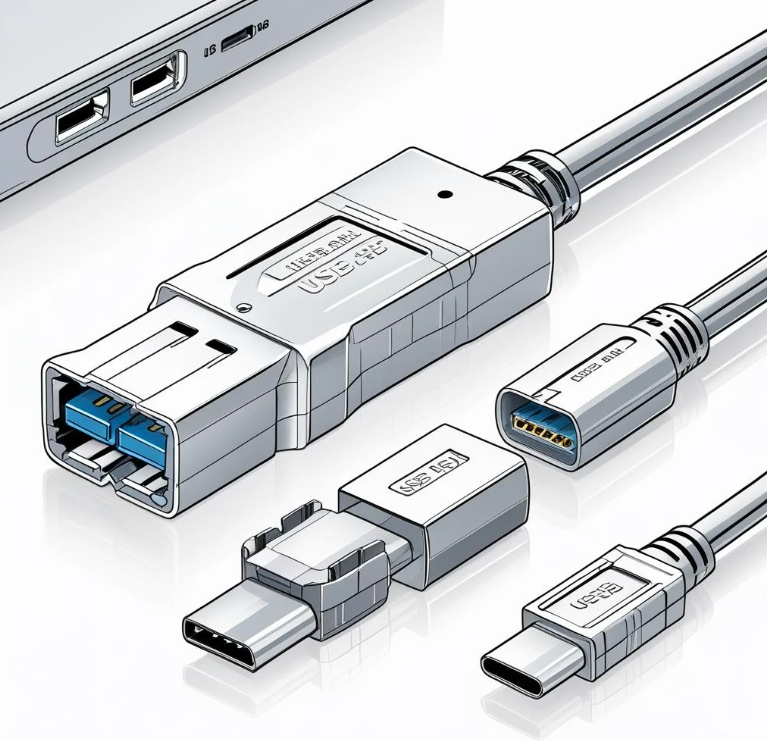
Let’s be honest: the promise of USB-C sounded like something out of a minimalist tech lover’s fever dream. One sleek, reversible port to charge everything, connect everything, and finally rid your backpack of that sad knot of random cables you’ve been dragging around since freshman year.
Fast forward to 2025, and just about every new gadget — laptops, tablets, phones, even electric toothbrushes (yes, really) — seems to have adopted USB-C. But here’s the real question: is living that “USB-C everything” life actually more convenient? Or did we all just swap one mess of cables for a slightly neater mess of cables?
The Case for Convenience
First, let’s give USB-C some credit. There are real reasons why it feels so freeing to see that tiny oval port everywhere.
- One cable to rule them all: Need to charge your laptop, phone, headphones, or even your portable monitor? Grab the same USB-C charger and go.
- Reversible plug: Remember the days of stabbing at a micro-USB in the dark, flipping it over five times before it fit? USB-C ends that pain forever.
- Fast charging and data speeds: Power Delivery (PD) means your phone charges to 50% in minutes. Thunderbolt and USB 4 offer blazing data transfers, so even large video files won’t make you go for coffee while waiting.
All of this sounds fantastic. And for many people, day-to-day, it is fantastic.
But… It’s Still Kinda Complicated
Here’s the thing: “USB-C” is just the shape of the port — not what’s actually running through it. And that, my friend, is where things get messy.
- Different speeds, same port: Some USB-C ports support USB 2.0 (slow), some USB 3.2 (faster), others Thunderbolt 4 (super fast). They all look identical, so unless you squint at spec sheets or tiny stickers, you won’t know which is which.
- Charging confusion: Not all chargers or cables support the same wattage. The USB-C charger that juices your phone perfectly might barely trickle-charge your laptop — or not charge it at all.
- Video output? Maybe: Some USB-C ports support DisplayPort Alt Mode for monitors, some don’t. Again, you won’t know until you test — or Google it in frustration.
In other words, USB-C made cables look the same… but didn’t fully deliver on “one plug to do everything” because what’s inside still varies.
The Hidden Cost: New Cables Everywhere
Switching everything to USB-C also means… buying new stuff. Your trusty old power bank with micro-USB? Useless. That drawer of spare cables? Also useless.
And while a decent USB-C charger and cable set can cover most needs, buying good ones isn’t always cheap — especially if you need high-wattage charging for a laptop and fast charging for your phone.
But Let’s Be Honest: It’s Still Better
Even with those quirks, life with USB-C devices is generally more convenient than before.
- You carry fewer cables.
- Losing your charger is no longer a crisis; your friend’s USB-C charger might work.
- The plug is future-proof (until the next big standard).
The messy details mostly matter for power users — people editing video, running external GPUs, or juggling multiple monitors. For everyday tasks, USB-C mostly does make your life simpler.
What’s Next?
The good news: the industry knows about these problems. USB4 and better labeling standards are starting to help. Labels like “100W PD” or “40Gbps” are appearing on cables, and laptops sometimes mark which port does what.
The European Union’s rule mandating USB-C on portable electronics is also pushing everyone in the same direction — so compatibility should keep improving.
Verdict
Are USB-C everything devices really more convenient? Mostly, yes — just not perfectly. We’ve traded dozens of incompatible cables for a few look-alike cables that aren’t always interchangeable. But the day-to-day experience is still simpler than the wild west of micro-USB, proprietary laptop chargers, and weird barrel plugs.
So yes, your minimalist cable dream is closer to reality — just keep a spare fast charger and double-check what your ports can actually do. Tech progress, after all, is rarely as tidy as the marketing makes it sound.